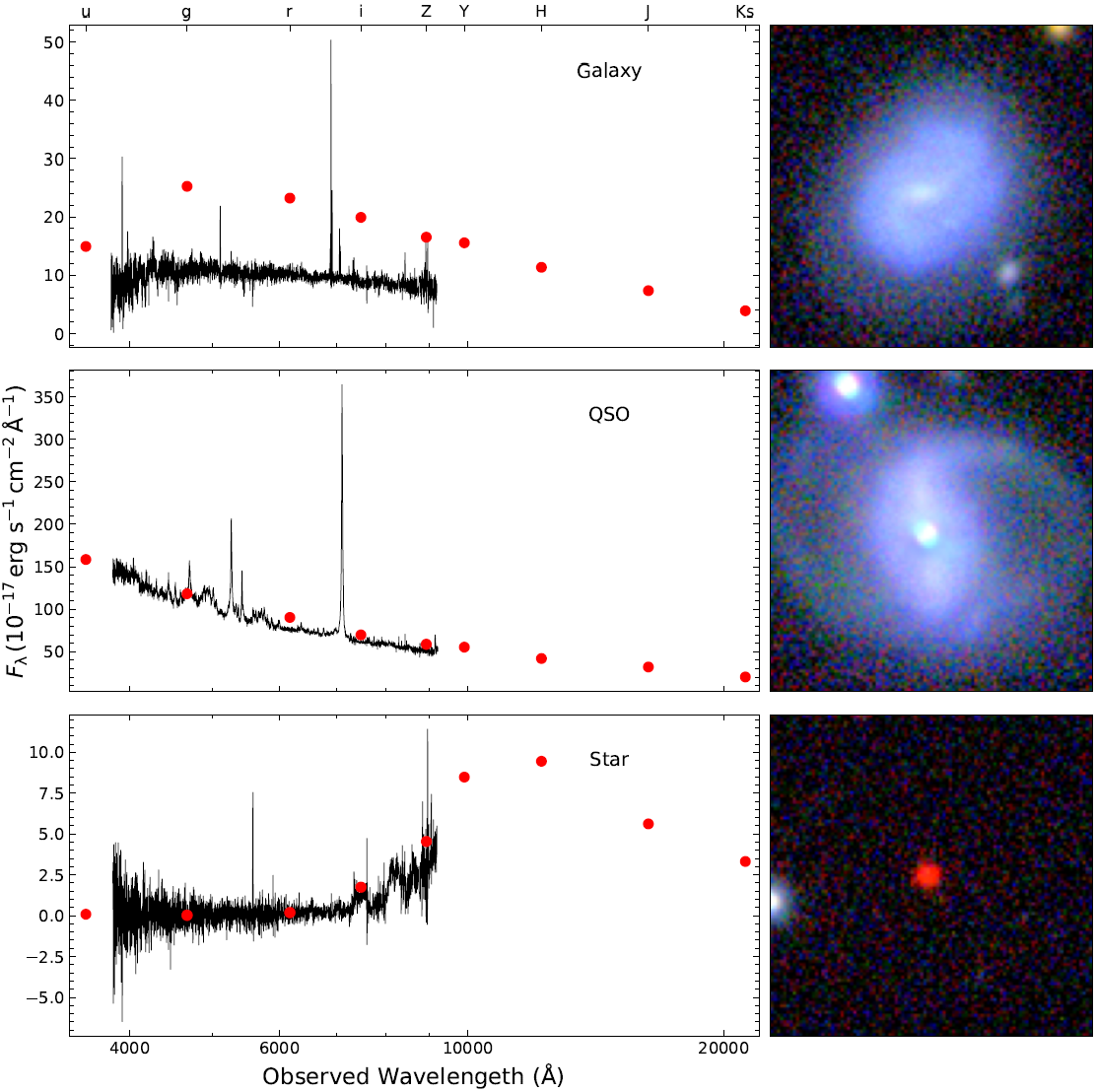
A new study led by researchers from the Yunnan Observatories of the Chinese Academy of Sciences has developed a neural network-based method for large-scale celestial object classification, according to a paper recently published in The Astrophysical Journal Supplement Series.
Accurate classification of stars, galaxies, and quasars is crucial for understanding the structure and evolution of the universe in modern astronomy. While spectroscopic observations offer high-precision classifications, they are time-consuming and resource-heavy. In contrast, photometric imaging is more efficient and sensitive to fainter objects. However, classification relying solely on morphological or spectral energy distribution (SED) features is plagued by ambiguities. For instance, high-redshift quasars and stars both appear as point sources in images, making them hard to distinguish.
To tackle these challenges, the research team created a multimodal neural network model that can process both morphological and SED features simultaneously. By integrating these complementary data sources, the model achieved high classification accuracy for stars, quasars, and galaxies. It was trained using spectroscopically confirmed sources from the Sloan Digital Sky Survey Data Release 17, laying a foundation for classification. When applied to the fifth data release of the Kilo-Degree Survey (KiDS), the model successfully classified over 27 million celestial sources brighter than r = 23 magnitude across approximately 1,350 square degrees of sky.
Testing validated the model's performance. When applied to 3.4 million Gaia sources with significant proper motion or parallax—traits typically unique to stars—the model correctly identified 99.7% as stellar objects. Similarly strong results were seen with the Galaxy And Mass Assembly Data Release 4, where 99.7% of sources were accurately classified as either galaxies or quasars.
Notably, the research found the model could correct misclassifications in existing catalogs. Random checks showed that some objects visually identifiable as galaxies but mislabeled as stars in SDSS were correctly reclassified by the neural network.
The study, which offers new insights into large-scale multi-band sky surveys, was supported by the National Key R&D Program of China and the National Natural Science Foundation of China, among other funding sources.

Differences in SEDs, spectroscopic features, and spatial morphologies among various types of celestial objects. From top to bottom, the examples shown correspond to a galaxy, a quasar, and a star. The spectroscopic data are from SDSS, while the SEDs and image data are from the KiDS. (Image by FENG Haicheng)

Confusion matrix of the classification results based on a sample of 20,000 celestial objects. (Image by FENG Haicheng)

86-10-68597521 (day)
86-10-68597289 (night)

52 Sanlihe Rd., Xicheng District,
Beijing, China (100864)

